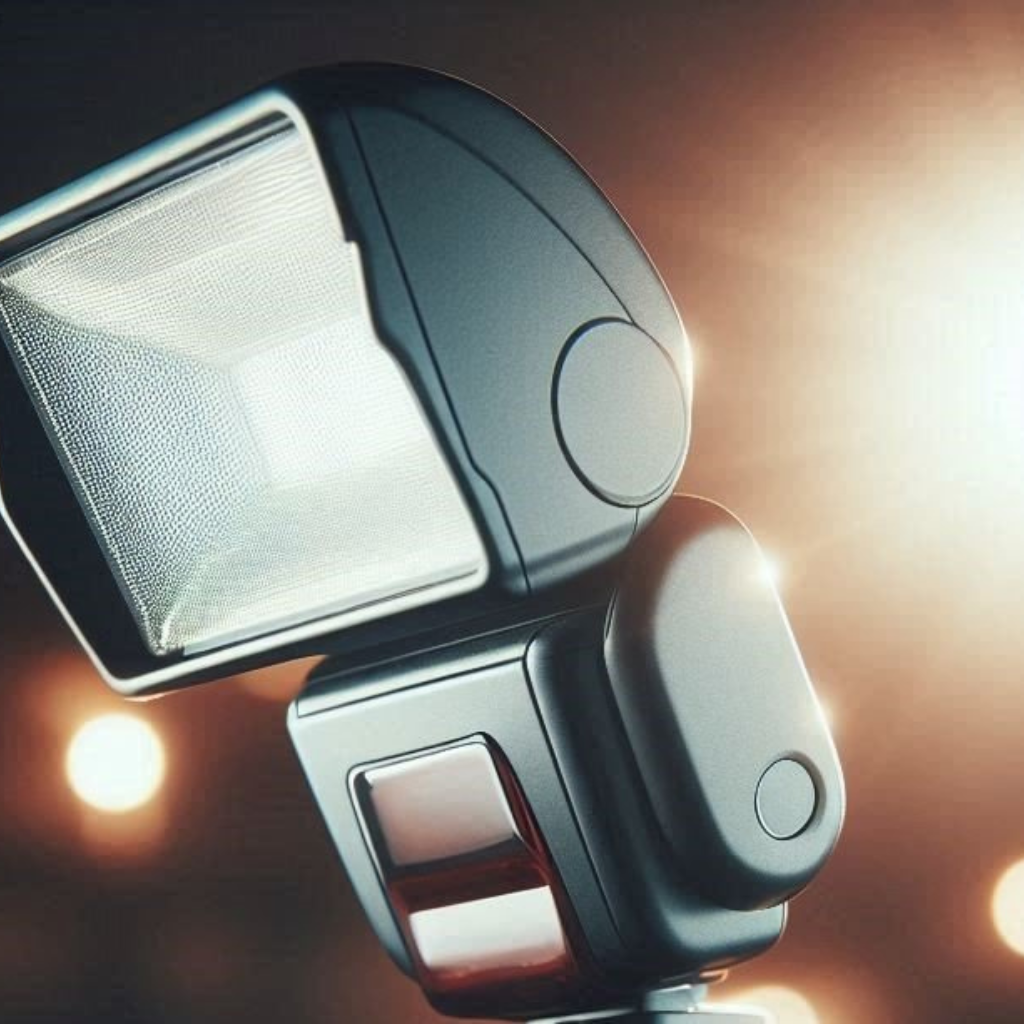
Level Up!!!
Are you ready to take your photography to the next level? In this post, I’ll delve into the world of external flashes. I’ll explore what they are, why they’re essential for photographers, and how they can dramatically improve your images. Whether you’re a seasoned photographer or just starting, understanding the power of external flashes will help you capture stunning photos in any lighting condition.
It’s A Detachable Device
An external flash plays a significant role in elevating your photography game. Unlike the constant, natural light that can be unpredictable, an external flash offers consistency and precision. They’re detachable devices that mount onto the camera’s hot shoe (the area above the lens where you can put attachments) or connect wirelessly, allowing you to manipulate lighting with far more control than ever.
Various Models
This isn’t just about having more light. It’s also about the creative freedom it affords. There are various external flash models, from simple manual flashes to more sophisticated ones with TTL (Through-The-Lens) metering, automatically adjusting the flash intensity based on the shot.
Low Light Use
Photographers often reach for an external flash to fill in shadows, freeze motion in low light, or infuse their subjects with a sense of depth and texture that’s not always possible with ambient light. In short, it’s vital for anyone serious about capturing stunning, well-lit images.
Internal Vs. External Flashes
Just like Ford Vs Chevy, there is an age-old debate between internal and external flashes. Believe it or not, the small flash that’s built into your camera isn’t just there for decoration. It has its uses, like providing a quick and convenient burst of light. However, it does have limitations. These built-in flashes can produce harsh shadows and a not-so-flattering ‘deer in headlights’ effect. That’s usually due to the direct and undiffused nature of the light they emit. On the other hand, external flashes allow you to manipulate the light more creatively and effectively.
More Power
Now, if you’re considering an external flash, there’s quite a bit going for them. First, they’re more powerful than internal flashes, which means they can light up a larger area and reach farther subjects. They also offer swivel and tilt functions, empowering you to bounce light off ceilings and walls for a more natural, flattering illumination.
But Wait, There’s More.
External flashes often provide faster recycling times, so you can take multiple shots in quick succession without missing a beat. And let’s not forget about the ability to add light modifiers, like softboxes, to dial in that quality of light.
Not All Sunshine And Rainbows
But it’s not all sunshine with external flashes. They do come with a couple of drawbacks. They’re bulkier, require a bit of setup, and can be an added expense. Plus, you’ll be juggling another battery to keep charged. You might be wondering, ‘Is it worth the hassle?’ Well, when you find yourself in situations where your internal flash falls short, like shooting at great distances or needing softer lighting for portraits, that’s when you’ll appreciate having an external flash in your toolkit.
Consider All Situations
Besides the obvious pros and cons, there are subtle things to consider. Internal flashes work in a pinch, and for many casual photographers, that’s enough. But for those looking to elevate their photography, the nuanced control and improved light quality of an external flash are invaluable. Choose something that resonates with you and your photography goals. Remember, your first attempt with an external flash doesn’t need to be perfect. You can always adjust your approach down the road.
When to Use an External Flash
Understanding the lighting conditions is like reading a map before you start your journey. It dictates the direction of your photography. External flashes aren’t always necessary, but there are definite moments when they become your best ally. Let’s explore those situations.
Somewhere you should consider an external flash would be an indoor event. These are notoriously challenging for photographers due to low lighting. Your external flash can cut through this gloom like a beacon, providing the necessary illumination without cranking up the ISO to noise-inducing levels.
Fill The Light
Then there are the harsh shadows that the midday sun creates. An external flash, used as a fill light in these conditions, can soften the shadows on your subject’s face, making for a more flattering portrait. It’s not just about adding light, it’s also about controlling the quality of the light.
Backlighting
Next up is backlighting. When you have a light source directly behind your subject, your camera’s metering system can underexpose the subject’s face. With the help of an external flash, you can balance the foreground illumination for an evenly lit photo.
Not forgetting those macro photography moments! Capturing the minute details of a tiny subject often requires more light than what is available. An external flash can provide that extra level of control, allowing you to highlight the intricate details.
And let’s not overlook creative lighting techniques. An external flash opens up a world of possibilities like slow-sync flash and second-curtain sync that add dynamic movement to shots taken in low-light environments.
Tips for External Flash Usage
There’s a special satisfaction that comes with nailing the perfect shot and using an external flash can maximize your chances. Choosing something that resonates with you and your style of photography is essential, so don’t worry too much about sticking rigidly to the rules.
Settings
To start, let’s talk about settings. Adjusting your flash’s power output can help match the intensity of the ambient light, creating a balanced exposure. Your camera’s sync speed limits the shutter speed you can use with flash—typically around 1/200th of a second—so be mindful of that. Now what about Zoom? Your flash’s zoom setting concentrates or spreads the light. If you’re shooting a subject from a distance, a zoomed-in flash can illuminate them more effectively.
Balancing Flash Intensity
Balancing flash intensity isn’t just about technical know-how. It’s also about the feel of the photo. If the flash is too harsh, it can create unflattering shadows and highlights. This is where techniques for diffusing light become crucial. Use a diffuser or bounce the flash off ceilings or walls for a softer, more natural effect. Remember, practice makes perfect, so experiment with the angle and direction of your flash to learn how it behaves.
Different Conditions=Different Strategies
Different conditions call for different strategies. In a dim indoor setting, a direct flash can be stark and uninviting. If you angle it upwards, allowing the light to reflect off a light-colored ceiling, you grant the room a pleasant, ambient glow. But what if you’re outdoors at dusk? Aim for a lower flash power to complement the soft, residual daylight, giving your image depth without overpowering the natural light.
Maintaining Your External Flash Kit
So, you’ve become savvy at using external flashes and you’re capturing those standout shots. Great! But if you want to keep snapping those perfect moments, maintaining your flash kit is essential.
Your external flash is a workhorse, but even the toughest gear needs a little TLC. Regular cleaning is crucial. Dust off your flash after every use with a soft brush or microfiber cloth. And don’t forget to check the battery compartment for any signs of corrosion.
Storage
Storing your flash correctly is just as important as using it. Keep it in a dry, cool place to avoid moisture buildup that could lead to electronic damage. A padded case can be a lifesaver, protecting it from accidental bumps and drops.
Every device has its tantrums. If your external flash acts up, consult the manual for troubleshooting tips. Simple issues like misfiring can often be solved with a quick battery change or reset. And remember, firmware updates can prevent a whole host of problems before they start.
Final Thoughts
Treat your external flash kit with care and it will be your photographic ally for years to come. With regular maintenance and some common-sense care, you’re setting yourself up for a long and productive relationship with one of your most crucial photography tools.
Like with everything else in photography, knowing when to use and how to use an external flash will take practice. Over time you will become more comfortable with its use. So just grab your external flash, get out there, and have some fun!!!
Did you enjoy this post? Do you want to know when the next post comes out? Consider subscribing. I only send update emails once a week, usually on Friday. Try it out. You can unsubscribe at any time.
